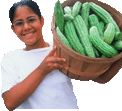Back to the Guide to Farming Table of Contents>>
The primary goal of risk management and insurance is to protect your assets from claims and lawsuits that may result from injury to persons or damage to property from accidents that are associated with your business. Effective risk management depends on combined efforts and close communication between yourself and your insurance company. Look for an agent with whom you are comfortable, who is well known and respected, who understands agriculture and businesses, and who will work with you to reduce your potential for risk.
When considering your risks, be sure to review the list below and describe your risks completely to your agent. You will not need all of the types of protection listed below, but it is important to know your options when shopping for insurance. Match your coverage to your needs for risk management.
Potential Insurance Coverage to consider for your operation
- General Liability Insurance covers injuries to people and property for which your farm is judged liable and mitigates your losses from lawsuits.
- Automobile Insurance covers vehicle damage while in your vehicle or to another vehicle while traveling.
- Home Owners Insurance typically covers fire, theft, personal property, lightning, riot, aircraft, explosion, vandalism, smoke, theft, windstorm or hail, falling objects, volcanic eruption, snow, sleet, and weight of ice. Usually flood and earthquake need to be purchased separately.
- Farm Insurance covers barns, rental housing, equipment, animals, and other farm assets.
- Workers’ Compensation Insurance is required if you have employees or interns.
- Product Liability Insurance is for damages that may arise from the consumption, handling, use of or condition of products manufactured, sold, handled, or distributed by your business.
- Contract Liability Insurance covers the assumption of the liability of another party through a contract or facility use agreement. For example, you may be required to provide a certificate of insurance to buyers that includes $1 million in product liability and additional insurance.
- Environmental Pollution Insurance covers clean up of manure, or pesticide spills.
- Crop Insurance – for weather, market, fire, pests, and other disasters. Options include: Multiple Peril Crop Insurance (50% yield loss), Adjusted Gross Revenue (50% income loss), or Non-insured Crop Disaster Assistance
- Life Insurance to help your family in case something happens to the bread winner.
- Health insurance for yourself and family in case you are hurt and need medical care.
- Business Interruption Insurance will provide living expenses if you are hurt and cannot work.
- Vendor’s Insurance will cover your liabilities if you are selling at a farmers’ market or trade show.
- Umbrella Liability Coverage is a liability insurance policy. It provides extra insurance protection over and above your existing policies and typically carries a high deductible.
See also the list and description of types of insurance in Fact Sheet #6 in this Guide.
Ways to Reduce Your Liability
- If you have people coming to your farm, keep your property in good repair.
- Minimize or eliminate dangerous situations. This might include: aggressive animals, manure pits, moving vehicles or equipment parts, etc. Fence off hazards wherever possible.
- Bio-security is recommended. Provide booties and hand wipes for visitors who enter barn areas.
- When selling or serving foods, make sure all regulations are met and carry product liability insurance.
- All workers on your farm are required to be covered by workers compensation, even if they work for free! So if you have interns, apprentices, or employees, you are required to carry insurance for them (The only exception is if your farm is set up as a 501(c)3 non-profit) See fact sheets 6 and 18 for more details on insurance and labor laws.
- Test your water supply annually for bacteria if your water is being used for washing produce or processing.
- Negligence is when you fail to take normal steps to eliminate hazards or you create a hazardous situation and fail to address it.
- Avoid making false statements or publishing incorrect information that may damage a person’s reputation as this can result in libel suits. Be careful of advertising claims or comparing your operation to others in a negative way.
- Manage your production techniques according to recommended best management practices.
This fact sheet is part of the Guide to Farming in NY by Monika Roth et al, published by the Cornell Small Farms Program and Cornell Cooperative Extension. Fact sheets are updated once annually, so information may have changed since last revision. If you are reading a printed version of a fact sheet, compare revision date with online fact sheet publish dates to make sure you have the latest version.

 Information for beginning farmers.
Information for beginning farmers.
